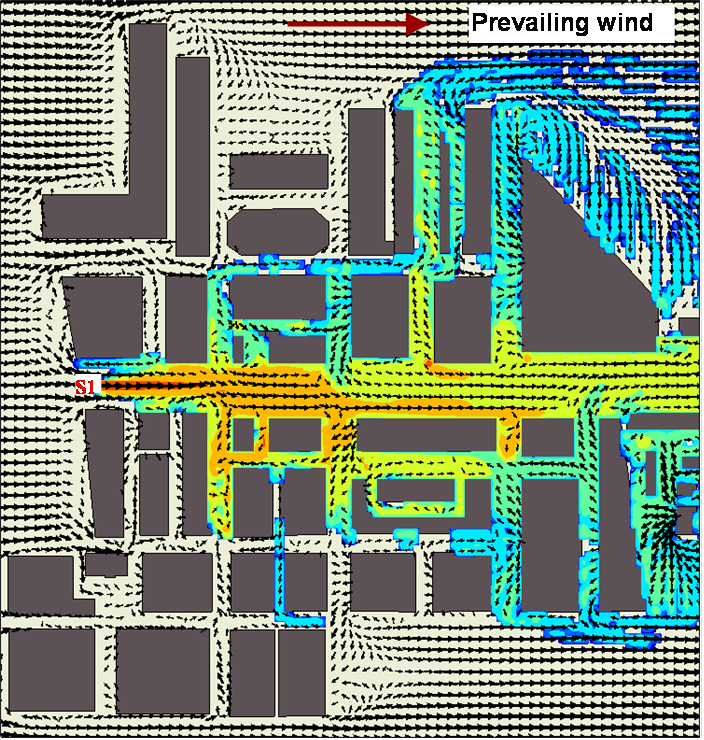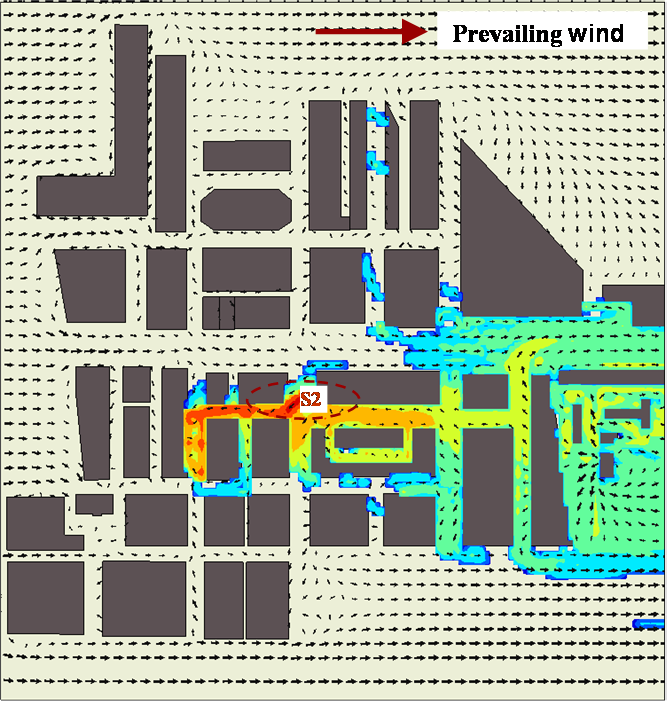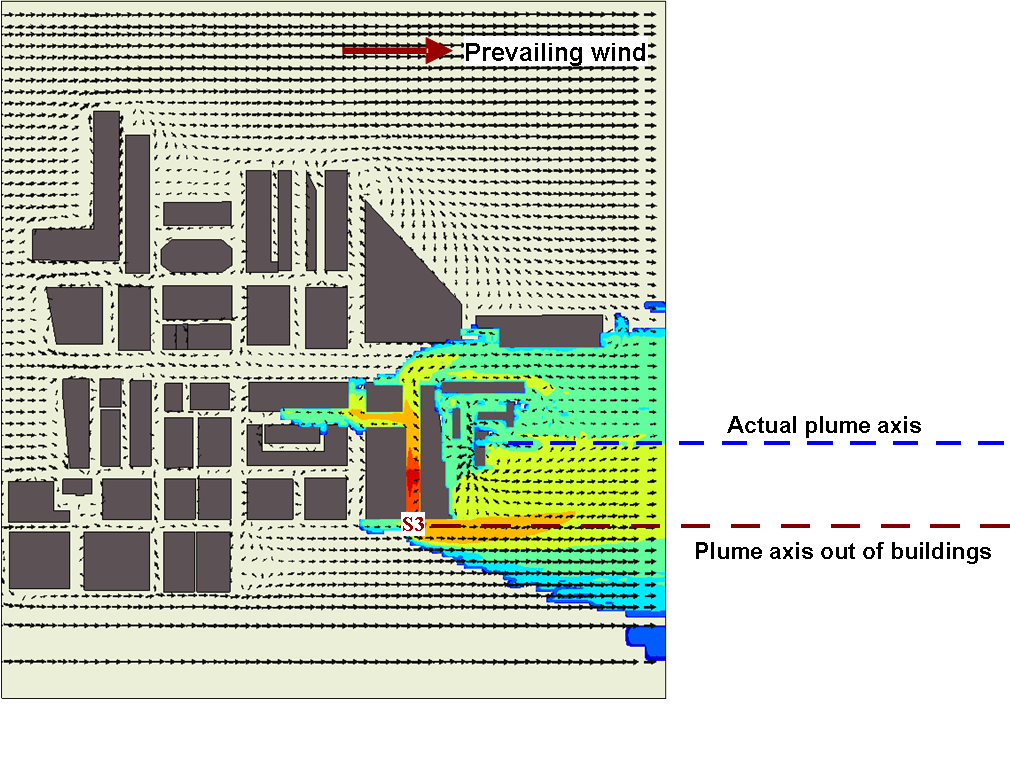Training on atmospheric dispersion in urban environments
7. Adapting the response to an urban environment
To illustrate dispersion in an urban environment, an event scenario is presented. It considers a fictional release of hazardous material (passive gas)
in an urban zone. Different examples of plumes, that vary depending on where the source is set, will help illustrate what has been learned on the impact of
buildings to actual hazardous release events that may require support.
Transport and dispersion around buildings structures is very complicated and patterns may be very different depending on building shape, relative heights, etc. Below, some cases present various urban features, providing an overview of common plume patterns that may develop in built-up areas [8].
Apparent wind anomalies

In this image, the source is located at S2. In the highlighted area, we note that the local wind is in the opposite direction (from the east) than the prevailing wind, which is blowing from the west.
Because of the complicated flows that develop around buildings, a measurement of wind made at ground-level may not be indicative of the upper-level prevailing wind. Evacuation zones far downwind, outside of the urban canyon, must be determined by the larger-scale plume transport which follows the prevailing wind, not the local wind.
Eddy transport of the agent

In this image, we can see that material is transported upwind of the source release (S2). Rotational winds that develop on the sidewalls or the rooftop of a building, can transport air pollutant in a direction opposite of the prevailing wind. Hence, contamination zones, with strong concentrations, are upwind of the source location.
Even if the source is determined to be downwind of a specific location, with respect to the prevailing wind direction, caution is required at nearby locations upwind of the source, as the urban plume can travel short distances in the opposite direction to the prevailing wind.
On-axis channeling effects

In this image, the source release (S1) is located in the street parallel to the prevailing wind showing an on-axis channeling effect. But at the same time, the plume is dispersed laterally.
After determining that the prevailing wind direction is parallel to the street containing the release, it is important to be aware that contaminated air is likely to travel several blocks in each direction along side streets.
Agent trapping in vortices

In this figure, the source (S2) is located near a building wall.
Air contaminants can become trapped between buildings in slow-moving vortices, thus taking longer to flush out with clean air. In most cases, wider buildings and narrower streets will trap the pollutant longer.
<< Previous | >> Next